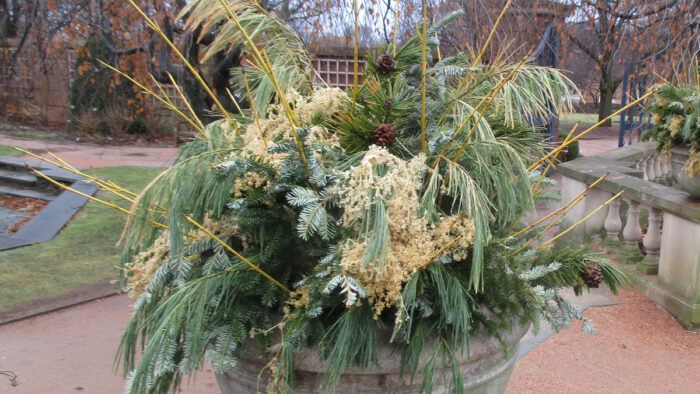
While winter in the Midwest brings an end to active growth in the garden, there’s no reason why containers out in our gardens can’t continue to contribute color and texture. The ornamental plant features that we most appreciate in the winter landscape (colorful stems, ornamental bark, showy seedheads, interesting texture, etc.) can also be used to exhibit and accentuate that “fourth season of interest” in our garden pots. With the use of a wide range of durable and creative materials, along with proper container preparations, the show can go on throughout the long winter months.
Look to your landscape to harvest festive branches and stems for winter containers
As a “dried arrangement,” a winter container relies upon colorful branches and trimmings from conifers, like spruce (Picea spp. and cvs., Zones 2–9) and pine (Pinus spp. and cvs., Zones 2–11), bright stems from dogwoods (Cornus spp. and cvs., Zones 2–9) and select willows (Salix spp. and cvs., Zones 3–9), and inflorescences (flower/seed heads) of ornamental grasses. There are likely elements out in your late-season garden that can be lengthy contributors in winter arrangements—such as hydrangea (Hydrangea spp. and cvs., Zones 4–10) stems and blossoms, which have a long life out in the garden and hold snow nicely. While some dried perennial stems and blooms might make interesting winter container components as well, you will have to experiment to see what works best, as many “shatter” or break apart as the season progresses.
Choose durable materials that will last through winter
As you access which plants in your garden might be useful in your winter containers, be sure to consider harvesting materials in a way that does not compromise the specimen. For example, if you have a colorful yellow-twig dogwood (Cornus sericea ‘Flaviramea’, Zones 3–8) that you’d like to use, pruning just some of the stems is more realistic than a more severe approach. Herbaceous materials are fair game, as they’ll generate new growth in spring, but be wary of denuding too much of an evergreen (or any woody plant for that matter) simply for use in a container. Be judiciously selective. Pick out the most durable of materials that will have the best longevity in the container through those winter months, and realize that some editing of elements may be necessary from time to time. Some garden centers and floral shops will sell colorful stems and other potential ingredients to support your winter container creations.
Before you begin, remove the soil to prevent damaging your container
When assembling your winter container arrangement, I recommend using an empty pot and removing the soil (if your creation is being built from a summer or fall container). This will prevent freezing-and-thawing damage that will compromise the container. Leaving soil in a container over the winter doesn’t always result in damage to the pot, but why risk it? Reestablishing drainage and adding new container soil in spring is a practice I follow every year. Container soil that is vacated can be distributed in the compost pile, used in a future raised bed, put into low spots, or utilized in some other fashion.
Pack your arrangement tightly, and get creative with decorative elements
Arranging your winter arrangement materials densely will help the composition hold together in the face of snow and wind. Also consider the use of disguised wire and twine as needed; floral foam can also help with wedging and securing materials in the container. If the container is light and prone to tipping over, consider internal anchoring with bricks, cinder blocks, or other materials that still allow drainage but add basal weight to the pot.
Have fun and get creative. You can personalize your container by adding unique elements such as pine cones, rustic vine structures, and spheres, or get creative with a bit of spray paint to provide more pizzazz. There’s no limit to the ways you can enliven the winter months with an inspiring seasonal container.
—Mark Dwyer is the garden manager for the Edgerton Hospital Healing Garden in Edgerton, Wisconsin, and he operates Landscape Prescriptions by MD.
Photos: Mark Dwyer
Fine Gardening Recommended Products
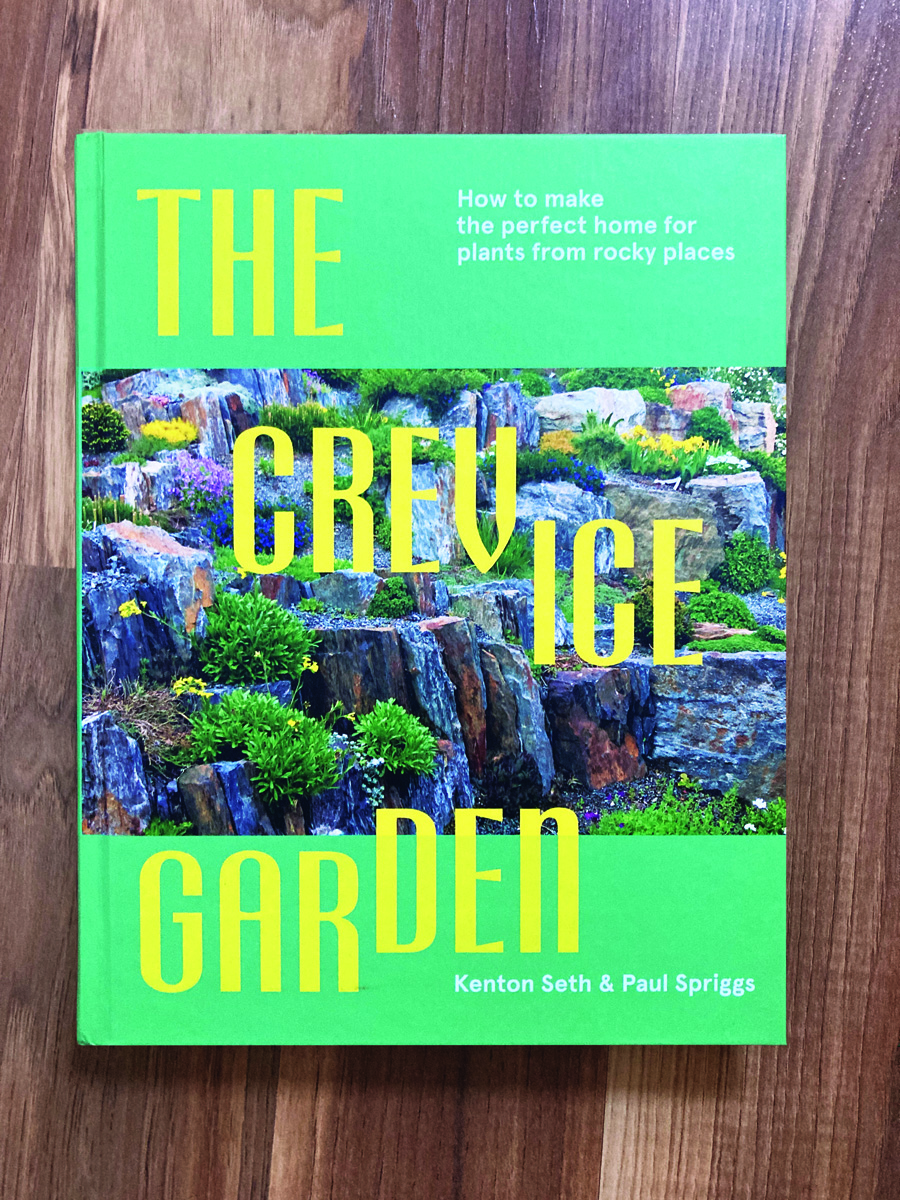
The Crevice Garden: How to make the perfect home for plants from rocky places
Fine Gardening receives a commission for items purchased through links on this site, including Amazon Associates and other affiliate advertising programs.

ARS Telescoping Long Reach Pruner
Fine Gardening receives a commission for items purchased through links on this site, including Amazon Associates and other affiliate advertising programs.

Planting in a Post-Wild World: Designing Plant Communities for Resilient Landscapes
Fine Gardening receives a commission for items purchased through links on this site, including Amazon Associates and other affiliate advertising programs.



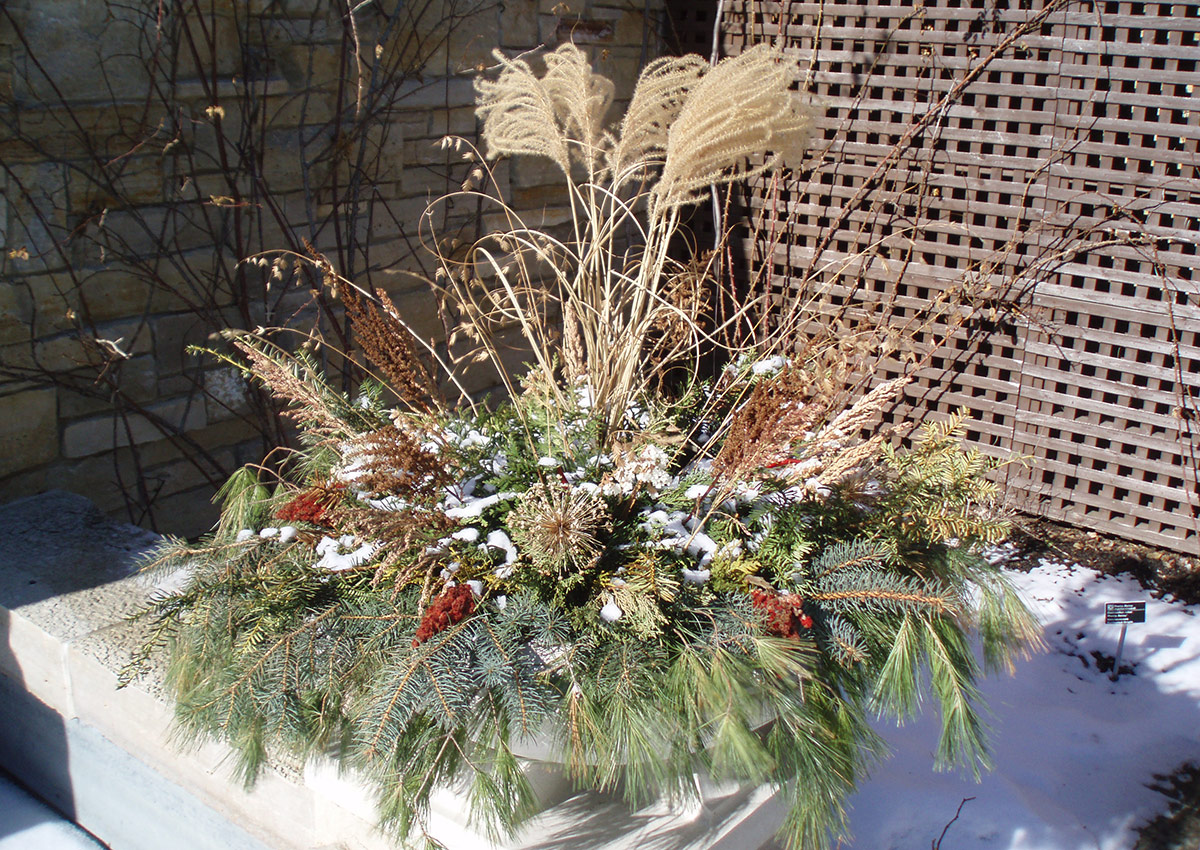
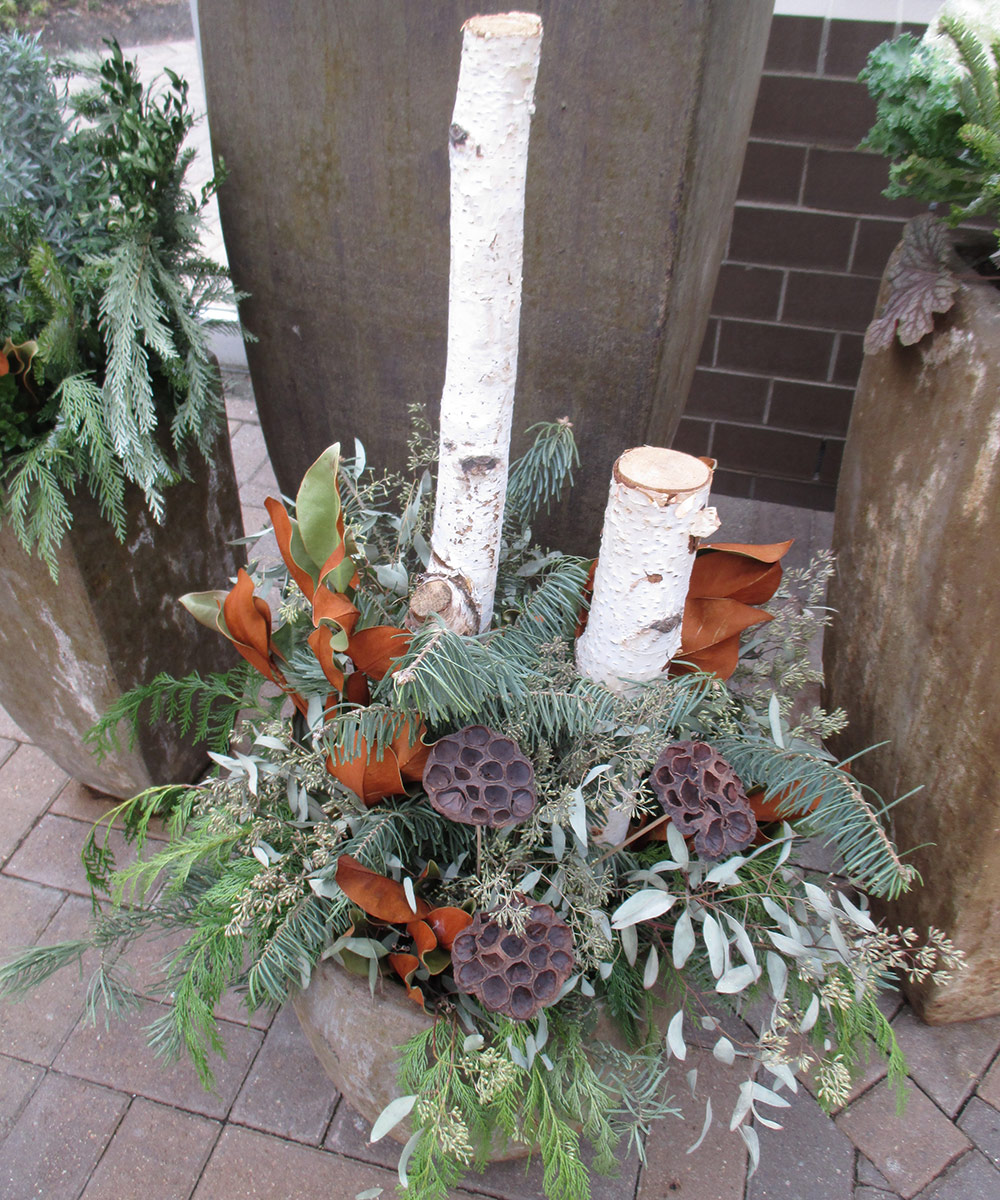
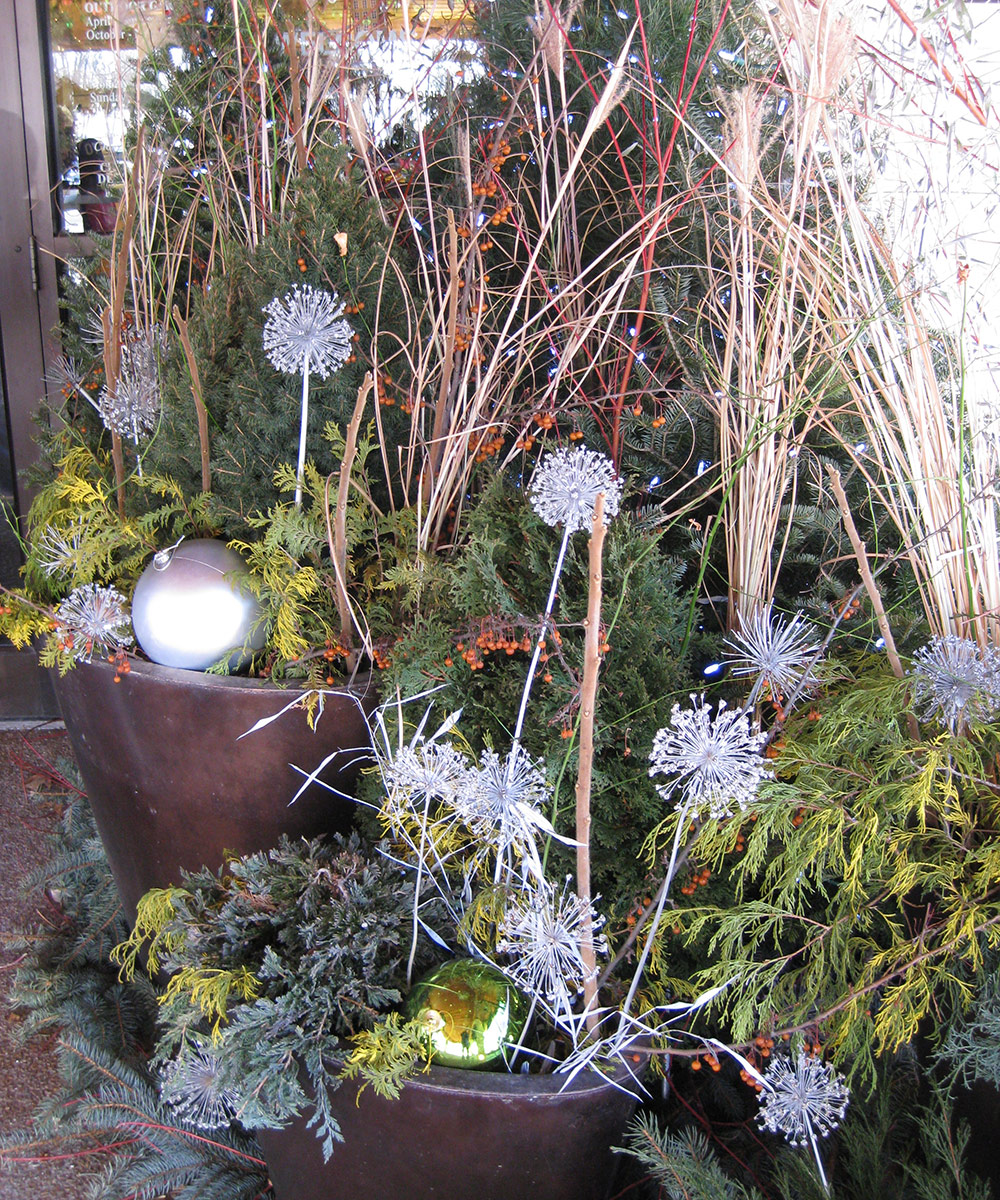

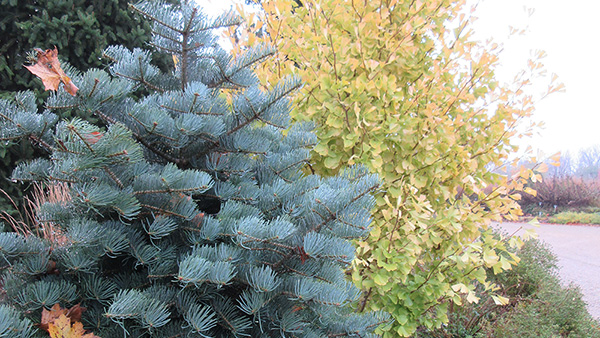
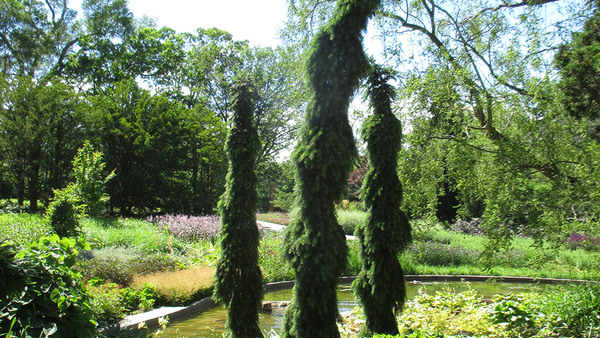
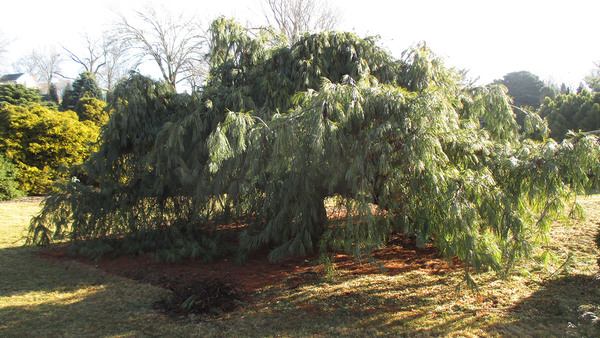













Comments
Log in or create an account to post a comment.
Sign up Log in